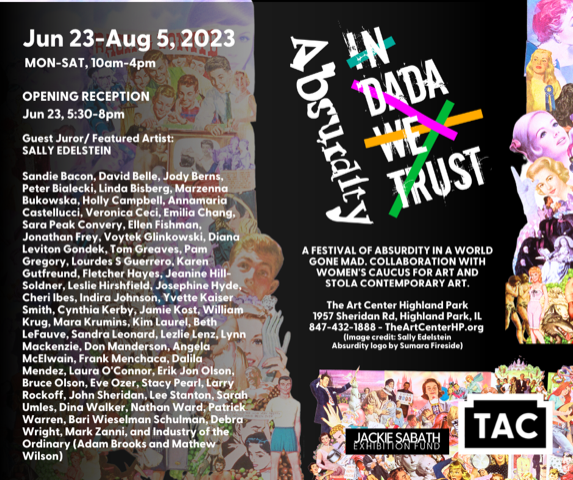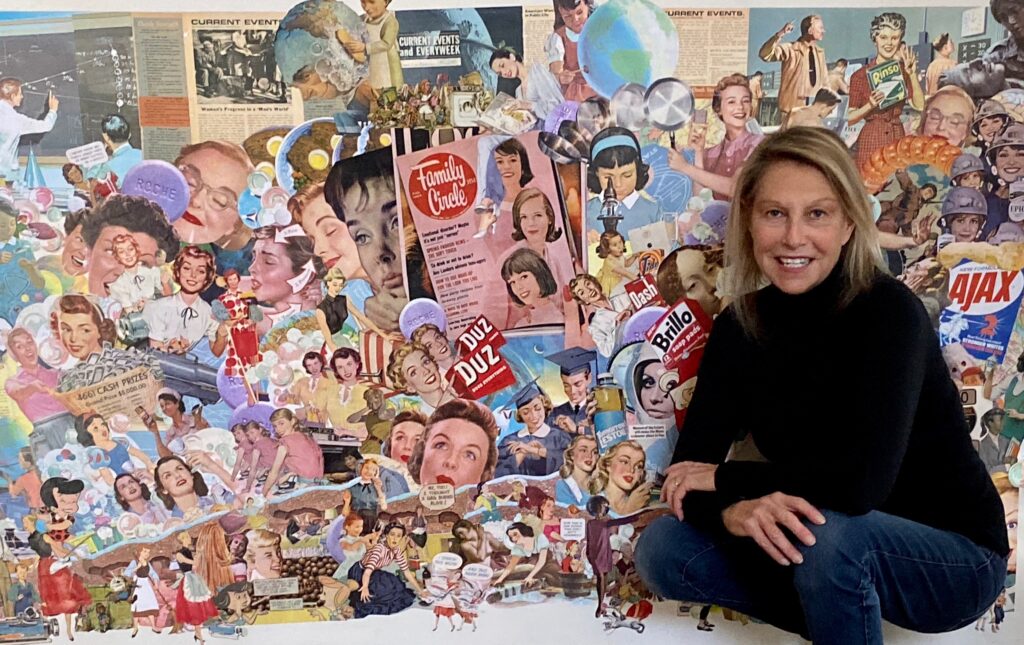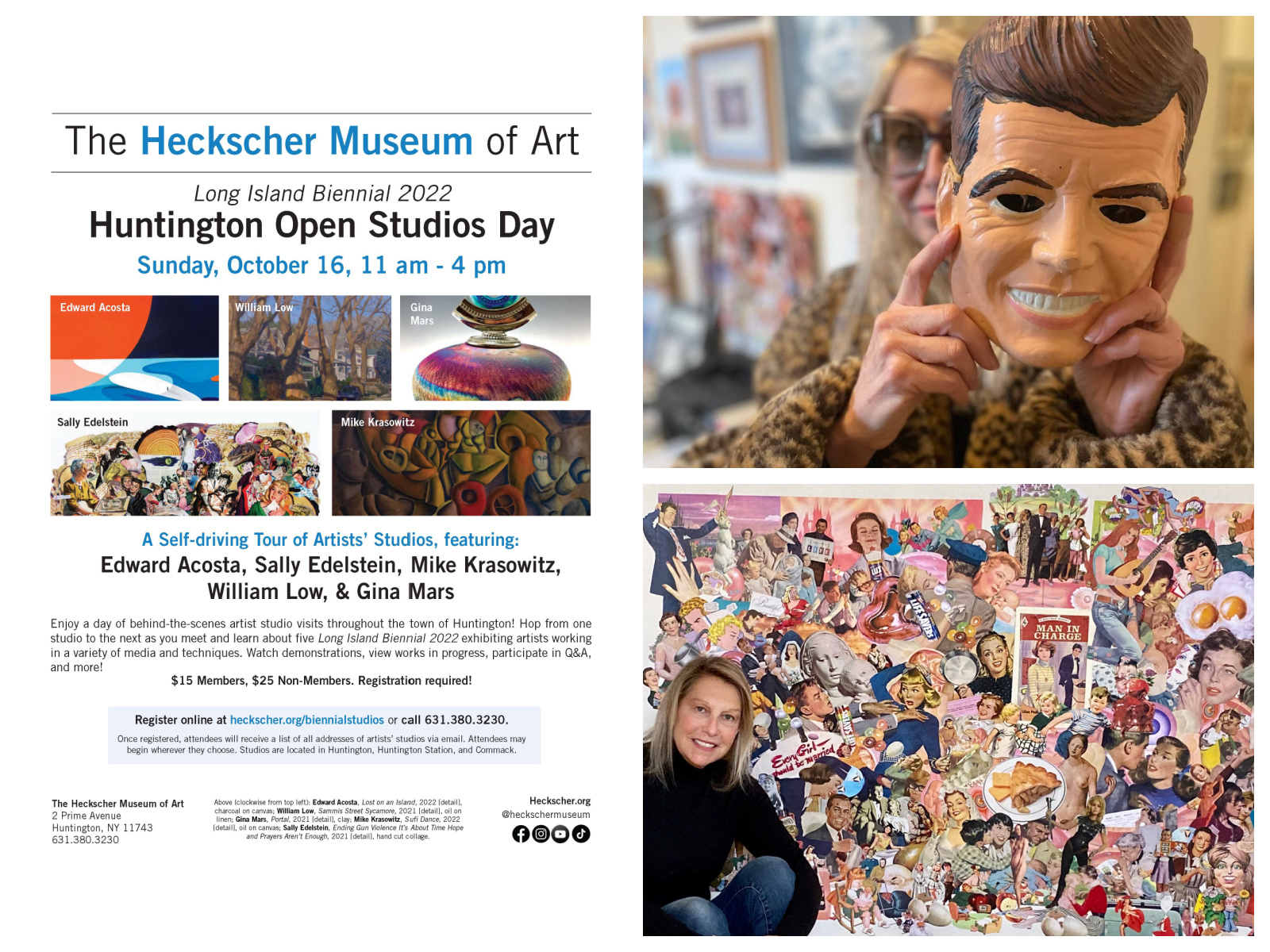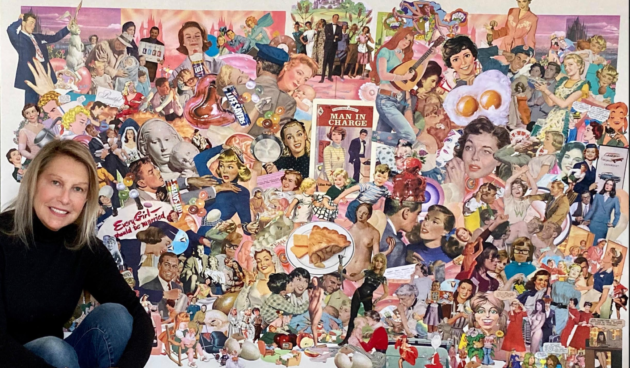Absurdity In Dada We Trust Art Show The Art Center Highland Park June 23-Aug 5, 2023

We are living in absurd times.
Thinking the unthinkable is no longer unthinkable. It is reality.
No one is immune. No one is safe
When the world goes mad, the arts go Dada.
I am delighted and honored to be the featured artist as well as the juror for an all too timely show “Absurdity, In Dada We Trust,” opening June 23-August 5, 2023 at The Art Center Highland Park, Illinois.
In our surreal world, racism and white nationalism are empowered and bullies are applauded. Women’s rights are being set back by 50 years, and the LGBTQ community is dangling by a thread.
A kafkaesque world where individual rights are regulated but assault weapons are not.
It's grotesque.
Social media has highjacked news and the term ‘alternate set of facts’ has become the norm, no longer just the brunt of jokes. The world is witnessing a new level of insanity. For artists, it’s a clear call to look to the past for guidance and take a stand.
How? In a word: Dadaism.
.jpg)
Created as a reaction to the absurdity of war and the propaganda of WWI, Dadaism was the reaction of a group of artists from another time in history when the world was on the brink of madness.
Like Dada that makes a mockery of middle-class materialism and nationalistic attitudes, my work has always been a satirical critique of politics and popular culture.
We are being assaulted on all fronts.
Art is often on the front lines.
The Art Center Highland Park
1957 Sheridan Rd Highland Park, IL. 877-432-1888
June 23- Aug 5, 2023
Opening Reception June 23, 2023, 5:30-8 pm
I look forward to seeing you there.Please Join me for a brief talk at the opening reception



Collage-maker Sally Edelstein calls herself a “visual archeologist,” digging deep into American mythology. But she does more than this. Alongside the creation of innumerable pieces of wall art that juxtapose the collision between past and present, her blog, envisioningtheamericandream.com, probes the ways that advertising and media steer our perceptions of race, class, and gender and how they can either expand or limit what we imagine for ourselves and our lives. Humor is abundant. So are pointed critiques of the Trump administration. There is also a focus on environmental calamity: Edelstein’s work chronicles the transition from World War II shortages, when “Use it up, Wear it out, Make it do, Or do without” segued into rampant consumerism at the end of the war and sent Rosie and her riveting sisters back to the roost. She spoke to Lilith’s Eleanor J. Bader about her art, writing, and political rage from her Long Island home in mid-September.
Eleanor J. Bader: Have you always been a collage artist?
Sally Edelstein: No. I started out as an illustrator and painter. Then I wrote and illustrated a book, This Year’s Girl that was published in 1985. It addressed the changes in the Boomer Girl generation, 1950s to 1980s. As I researched these decades, I started to look at the ways society has been fragmented by race, class, and gender and started to move into collage as a form of expression. It turned out to be a great way to position objects and ideas to tell a new story.
EJB: Tell me about your collection of ephemera. Where do you get the images you use in your collages and as illustrations on your blog?
SE: I’ve always been a collector, and the advertising samples and objects I have on hand turned out to be a perfect way to illustrate the social fictions and mythologies I’d been fed as a young, white, suburban Jewish girl. I have materials from 1915 or thereabouts to the present, but before I talk about this, let me describe what I’m looking at right now in my home office. It will give you an idea of the scope of what I’ve amassed. There is a 1937 Vanity Fair cover that shows a group of world leaders tying up Adolph Hitler; a George Bush action figure; and a Bobby Kennedy campaign poster.
My work concentrates on the years immediately following World War II to the 1970s. The collectibles from the 1950, 1960s, and 1970s are actually things I accumulated as a kid. Yes, I was even a collector as a child, but as I got older, I’d go to flea markets and tag sales. Then E-Bay made it a lot easier.
EJB: What do you see as the most striking thing about the post-war era?
SE: I’m particularly fascinated by the way women’s roles shifted on a dime in the aftermath of the Second World War. Working women liked earning their own money, liked doing their bit for the war effort, but even before the war ended, there were numerous articles in the press planting the seeds for women factory and office workers to return home, get married, have babies, and go shopping. The American housewife quickly became the American consumer, encouraged to buy, buy, buy. Women, of course, were often complicit in this shift. I have written blog posts quoting syndicating columnist Arlene Dahl who told readers that “a feminine woman makes a man feel important. She works at pleasing him, and heaven knows, she never lets her career get in the way of women’s real work.”
Then there’s movie star George Hamilton who told women they could get whatever they wanted” not by being forceful, but by being feminine.” My jaw drops every time I uncover statements like these. As many times as I see them, I wonder how so many women could possibly have bought into this. But they did.
EJB: How do you decide what to focus on as a writer-artist?
SE: I’m a bit of a news junkie and deeply affected by current events, I realized that I wanted to stop illustrating the work of other people and concentrate on doing my own work. Reaching back to my roots, I wanted to not only have more control over the content of the work I did, I wanted to address more political, feminist, and social justice issues.
As a 13-year-old kid, I rode my bike to Bobby Kennedy headquarters and volunteered. I’ve paid attention to the news and read a lot since childhood. Growing up, there was always political talk in my house. My dad was a Jacob Javits Republican and my mom and I were liberal Democrats. Some of my aunts and uncles marched for civil rights. For me, working for social justice is what being a Reform Jew is about.
I’ve volunteered on many campaigns—from George McGovern to Hillary Clinton–and in the 1990s was involved in ACT-Up, the Aids Coalition to Unleash Power. These experiences have influenced me. When I sit down to work, I typically begin with storytelling; words and ideas come to me before images. Overall, I’d say that my politics is my art. They are one and the same. Almost everything I do asks viewers or readers to re-envision their ideas and rethink old assumptions.
EJB: How has the Trump administration impacted your output?
SE: Not a day goes by that I am not cursing and wishing ill on him and his administration. The people he surrounds himself with, men like political advisor Stephen Miller, exemplify a lack of humanity. I’m aghast at Trump’s lack of empathy. He has not responded to police violence, COVID deaths, or the plight of desperate immigrants. For me, his lack of feeling is incomprehensible. My art and essays are included in a new book, Not Normal Art in the Age of Trump by Karen Gutfreund.
EJB: Let’s go back to the materials you’ve collected. Are you able to store everything in your home?
SE: I lived in Manhattan for 25 years but once I moved to Long Island in 2001—we moved in three days before September 11th - I had a lot more space and the collection expanded. Everything is cataloged and is very well organized. I also want to stress that when I use images in my collage, they’re hand-cut from photographic copies. I never destroy the original pieces. I see the collection I’ve amassed as a historical record. It’s like I have a little museum with objects that illustrate what I call everyday racism and sexism. I have Black Mammy kitchenware and ashtrays with suggestive pictures of women. I have fruit labels where the women’s breasts look like melons. I have “The Game of Career Girls” from 1966. In it, a girl gets to be - you guessed it - a stewardess, a model, a nurse, or a teacher. A boy’s version of the game presents very different possibilities: He could become a scientist or statesman. Predictably, the images in the game were all white. The jobs that Black and Brown people did were ignored. The game was clearly not about or for them.
EJB: What are you working on now?
SE: First, the upcoming presidential election is really important, but even if Trump is defeated, the issues of racism, sexism, poverty, and climate change will be with us. They’re the burning issues of the day and they will continue to be the focus of my work.
Due to COVID, some exhibitions I expected to participate in have been postponed but some of my work will be included in a show in Sonoma in 2021 entitled “Waves: Feminism Art & Power.” I’m also finishing a memoir, DeFrosting the Cold War: Fallout from My Nuclear Family, which describes how I learned to navigate the tangled doublespeak, duck-and-cover, culture of my mid-20th century childhood.